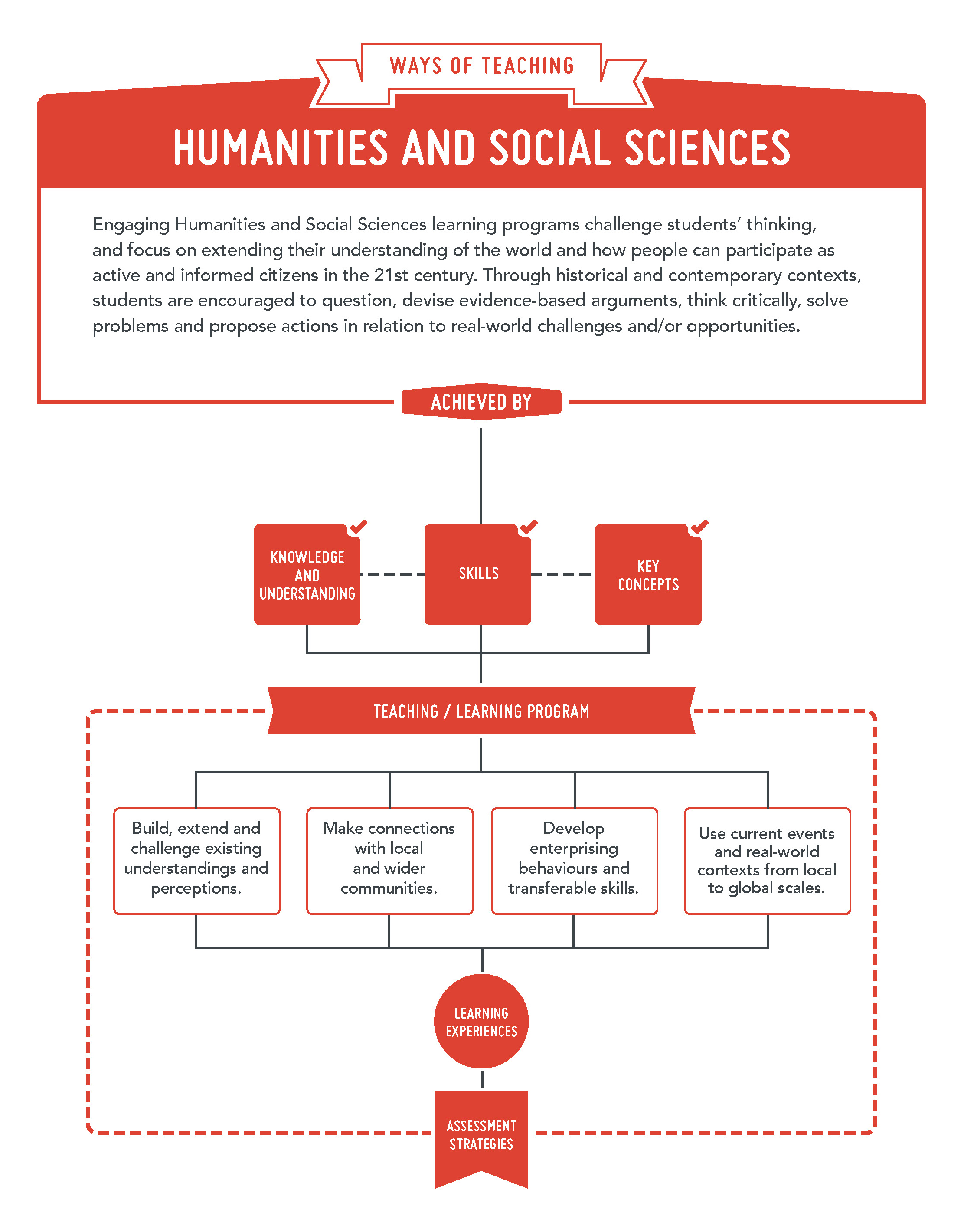Ways of Teaching
The 'ways of teaching' aims to support teachers with planning for curriculum delivery across the years of school, with the teaching in each year extending learning in previous years.
The 'ways of teaching' complement the principles of teaching and learning in the Western Australian Curriculum and Assessment Outline (http://k10outline.scsa.wa.edu.au/). The principles focus on the provision of a school and class environment that is intellectually, socially and physically supportive of learning. The principles assist whole-school planning and individual classroom practice.
Civics and Citizenship, Economics and Business, Geography and History can be taught separately or through programs created to link to more than one subject or to link to the content in other learning areas.
History and Geography commence in Pre-primary. Civics and Citizenship is introduced in Year 3 and Economics and Business in Year 5. All subjects continue through to Year 10.
In Humanities and Social Sciences, the key concepts, knowledge and understanding and skills within each subject are interrelated to inform and support each other. When developing teaching and learning programs, teachers combine these three aspects to create learning experiences.
The Humanities and Social Sciences knowledge and understanding identifies key concepts that are the high-level ideas involved in teaching students to think from a humanities and social sciences perspective.
Key concepts (Figure 1) for developing a Humanities and Social Sciences understanding are:
- Civics and Citizenship – democracy, democratic values, the Westminster system, justice, participation, rights and responsibilities
- Economics and Business – scarcity, making choices, specialisation and trade, interdependence, allocation and markets, economic performance and living standards
- Geography – place, space, environment, interconnection, sustainability, scale, change
- History – evidence, sources, continuity and change, cause and effect, significance, perspectives, empathy, contestability.
The Humanities and Social Sciences skills (Figure 2) are divided into: questioning and researching; analysing; evaluating; and communicating and reflecting. They are common to all four subjects. These skills can be taught discretely and/or in conjunction with the key concepts, knowledge and understanding, or as part of an inquiry approach.
To engage students in Humanities and Social Sciences, teachers typically create learning experiences which:
- draw on students' personal experiences and interests
- build, extend and challenge existing understandings and perceptions
- explore a range of viewpoints and different perspectives
- involve the past, present and future
- develop active and informed citizens
- use meaningful, real-world contexts, current events and issues to exemplify the content
- use a range of scales, from local area to regional, national and global areas
- engage students in problem-solving tasks and inquiry to develop evidence-based arguments, or proposals for actions or solutions to real-world challenges and/or opportunities
- involve students in learning outside the classroom through exposure to authentic experiences and making connections with local and wider communities
- develop skills, many of which are transferable to other learning areas and are valuable for students' future learning
- contribute to all the general capabilities and the cross-curriculum priorities.
Figure 3 is a visual representation of ways of teaching Humanities and Social Sciences.
For information on how to collect evidence to inform planning for ongoing learning experiences in Humanities and Social Sciences, refer to 'Ways of Assessing'.

 Humanities & Social Sciences Scope and Sequence
Humanities & Social Sciences Scope and Sequence